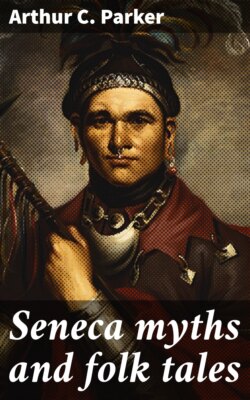Читать книгу Seneca myths and folk tales - Arthur C. Parker - Страница 6
На сайте Литреса книга снята с продажи.
METHODS EMPLOYED IN RECORDING FOLK TALES.
ОглавлениеTable of Contents
There are several methods which may be employed in recording folk-lore, and the method used depends largely upon the purpose in mind. A poet may use one method, and grasping the plot of a tale, recast it in a verbiage entirely unsuitable and foreign to it; a fiction writer may use another plan, a school boy another, a student of philology another, a missionary another, and finally a student of folk lore still another.
The poet will see only the inherent beauty of the story, and perhaps failing to find any beauty, will invent it and produce a tale that no Indian would ever recognize. Plot and detail will be changed, fine flowery language will be used, and perhaps the whole given the swing and meter of blank verse. This is all very well for the poet, but he has buried the personality of the folk-tale, albeit in petals of roses,—instead of allowing it nakedly to appear the living thing it is.
The fiction writer will take the original Indian tale and tear it apart with keen eyed professional discrimination. He will recast the plot, expand here and there, explain here and prune down there. He will invent names and new situations to make the story “go,” then, as a rule, he sells it to a magazine or makes a collection of tales for “a supplementary reader for children.” But are these Indian tales?
The amateur, finding good material in the Indian story will do as the fiction writer does, but he will work in foreign allusions and inconsistent elements and in other ways betray his unfamiliarity with his material. Like the fiction writer he is primarily after a story that he can dress as he pleases.
The sectarian enthusiast, recording folk-lore, will frequently seek to show the absurdity of the Indian tale, and point out the foolishness of peoples who are unacquainted with biblical teachings, but it is fortunate that all missionaries have not done this. Many have recorded folk-tales with great conscientiousness, and some of our best sources are from the notes of well informed missionaries.
The philologist will seek to make literal transcripts of every Indian word in painstaking phonetic spelling, and then secure an analytical interlinear translation. This is an accurate but awkward way of securing the tale, for readers who are accustomed to reading only straight English. It makes it a most tedious and laborious thing to read, and totally deprives the text of all literary life.
The student of folk lore starts in with a purpose. This is to secure the tale in such a manner, that without unnecessarily colored verbiage, it may be consistently dressed, and set forth in fluent English (or other modern language) in such a manner that it may be understood by an ordinary reader. The folk-lore student has still another motive and purpose, which is to so present his legend that it will awaken in the mind of his reader sensations similar to those aroused in the mind of the Indian auditor hearing it from the native raconteur. The recorder of the tale seeks to assimilate its characteristics, to become imbued with its spirit, to understand its details, to follow its language,—its sentences,—one by one, as they follow in sequence, and then he seeks to present it consistently. He adds nothing not in the original,—despite the temptation to improve the plot,—he presents the same arrangement as in the original, he uses similar idioms and exclamations, similar introductory words and phrases, and presents an honestly constructed free translation. This is far from an easy thing to do, for it frequently lays the recorder open to the charge of being a clumsy story teller. The temptation is ever present to tell a good story, and let the legend become the skeleton over which the words are woven. Needless to say, this is not an honest thing to do, and the folk-lore student resists this temptation, and gives his product a genuine presentation, regardless of what literary critics may think. He strives only to be the medium by which a native tale is transformed from its original language to that of another tongue. The thought, the form and the sequence of the story he insists must remain exactly as it was, though the verbal dress is European and not Indian.[1]
Perhaps actual illustrations of these methods will serve to convey the thought we are attempting to explain. Examples follow:
